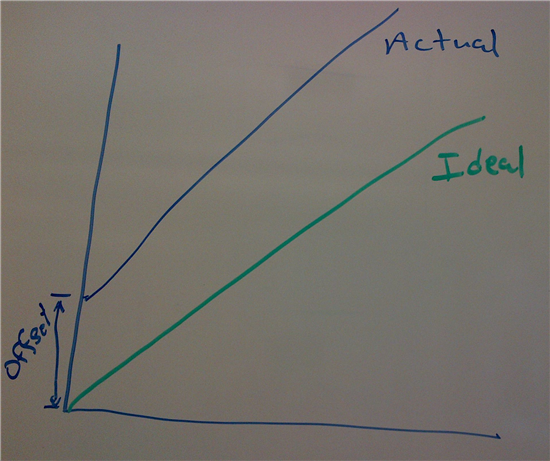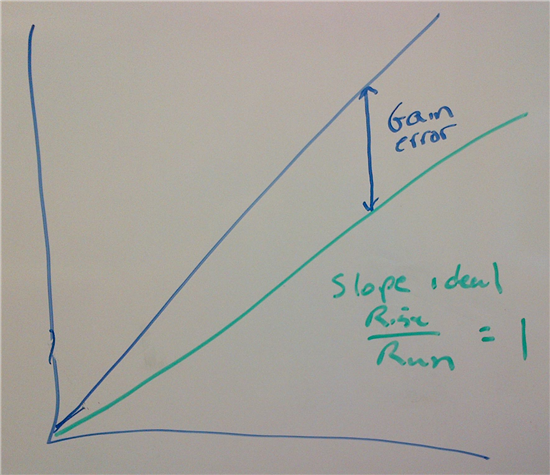Hi,
I am using ADS1247 to measure 2 x PT100 in 3-Wire Configuration. My ADS1247 configuration is,
- No Burn Out sources active, DVDD = AVDD = 5V,
- Internal Oscillator On, Internal Reference On, REF0 pins as ADC Reference, ADC Mode normal
- PGA=64, Speed=10 SPS
- DRDY/DOUT as DOUT only, IDAC = 100uA
- IDAC sourced to A0+/A1- & A2+/A3- pairs after each conversion
- No GPIO used
- R_BIAS=10k, R_COMP=110E, as I my range is 50-500 deg C.
I am able to set/read-back all registers correctly. I also checked the voltage across R_BIAS which is correct for 200uA(10k x 2 x 100uA).
But my problem lies the result.
- I am able to read back the conversion result for each differential pair, but their is +ve offset in result. For up to 70-80 C deg, there is nearly +20 deg offset and up to 120 C deg there is nearly 10 deg offset.
- IFC=0x000000 & FSC=0x401880 @ PGA=64
- This offset changes to different values, when I change the PGA.
- I have not yet done any external calibration, but tried ADS1247's SELFOCAL command without any effect.
- One thing to note that ADC conversion results(& PT100 resistance calculation from it) as read by micro-controller matches the temperature calculated. But comparing with my another third-party PT100 temperature probe, there is offset.
- Whatever the actual temperature & offset, result is stable around 0.5-1 C deg.
Image below shows my circuit. Note that R_COMP=110E is 25ppm, 1% and R_BIAS=10k is 100ppm, 1%. I will go for lower ppm R_BIAS once this offset issue is resolved.
What may be the problem ?
Thanks,
Saumitra A Deshpande





